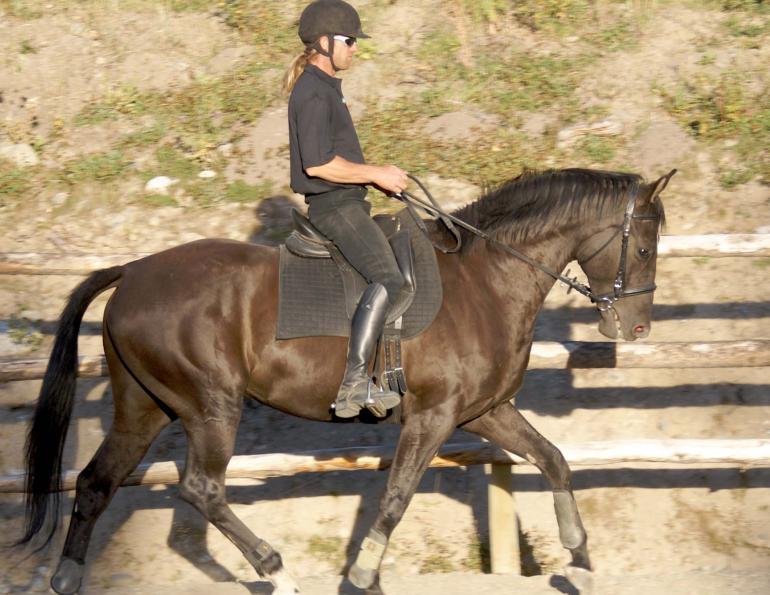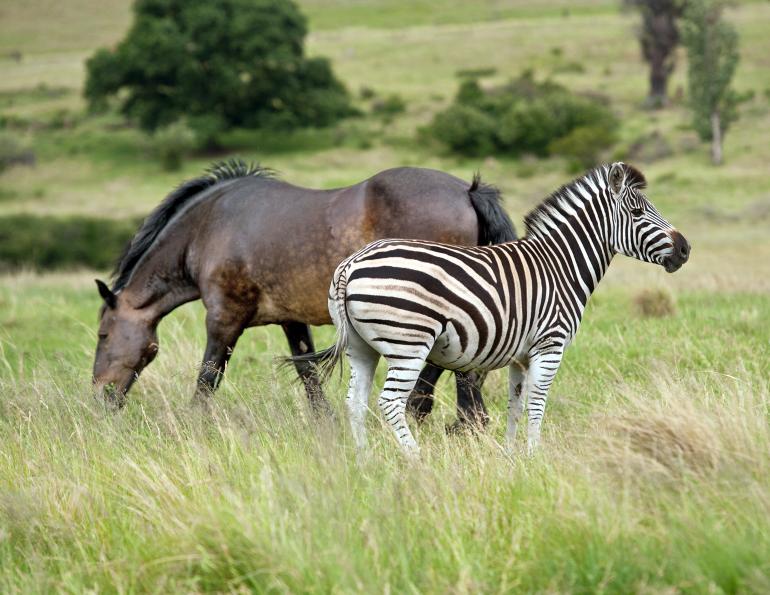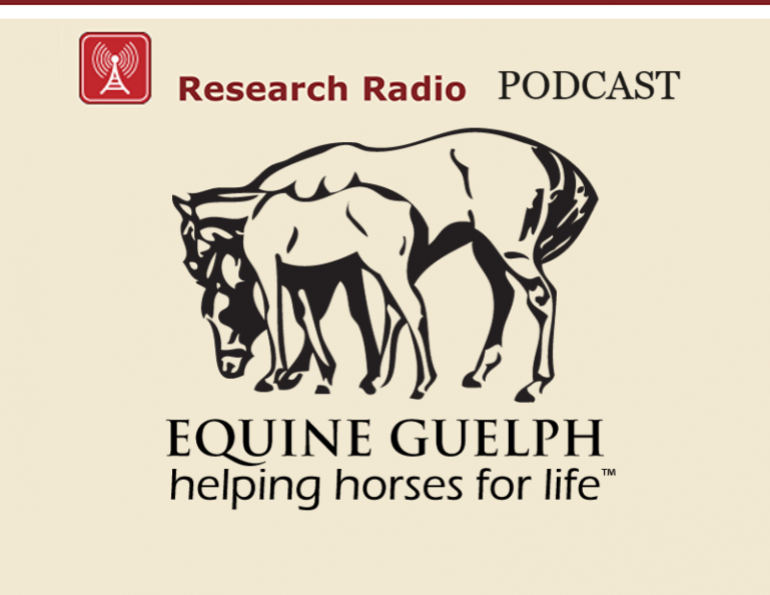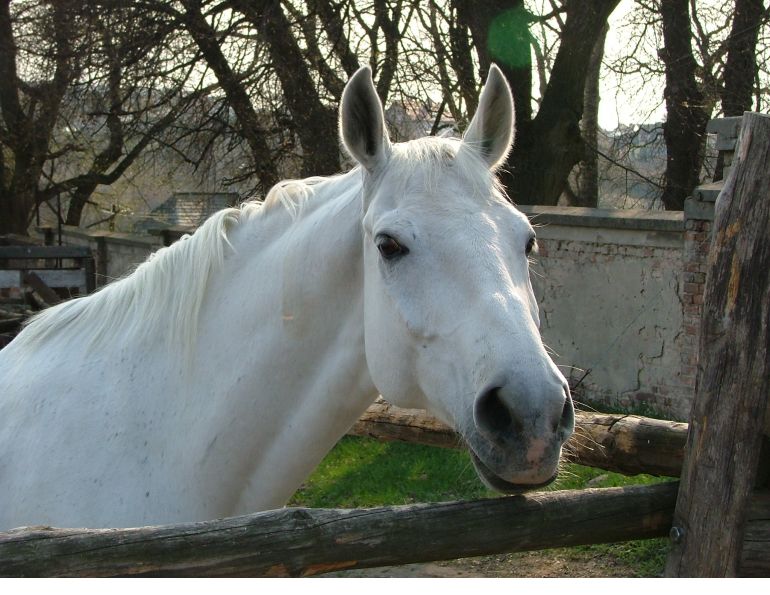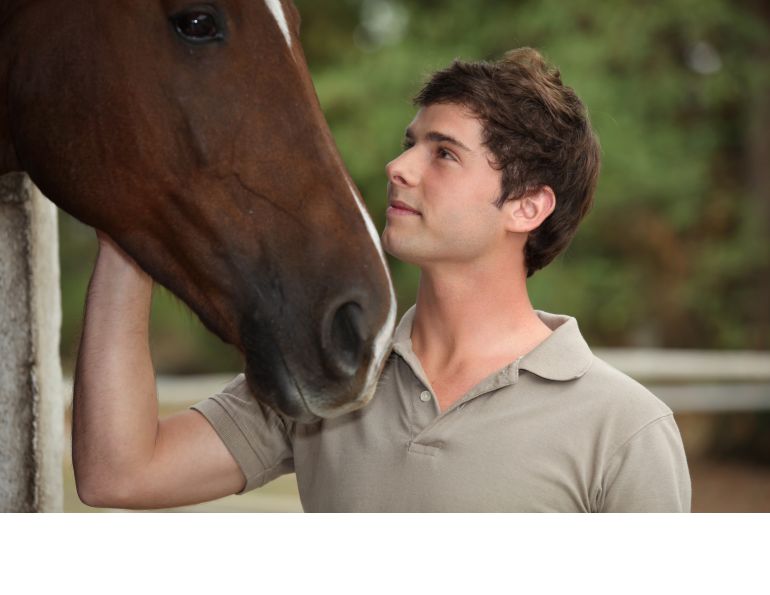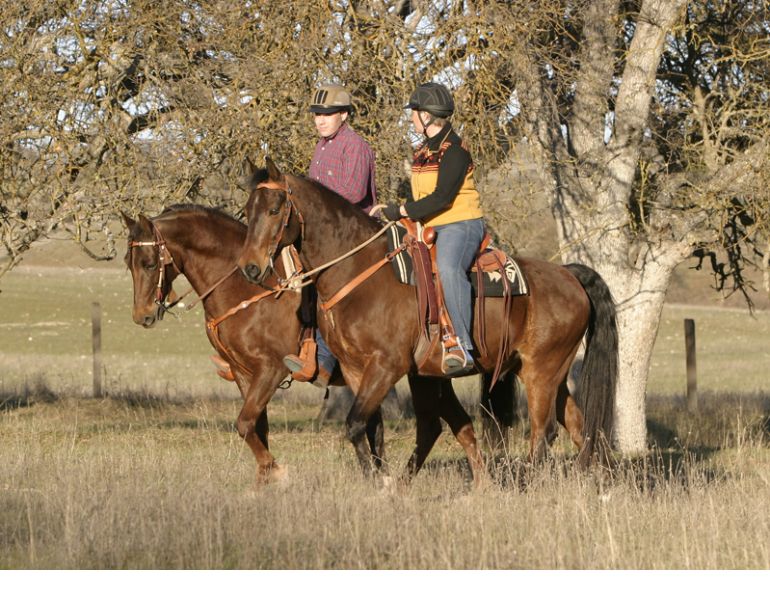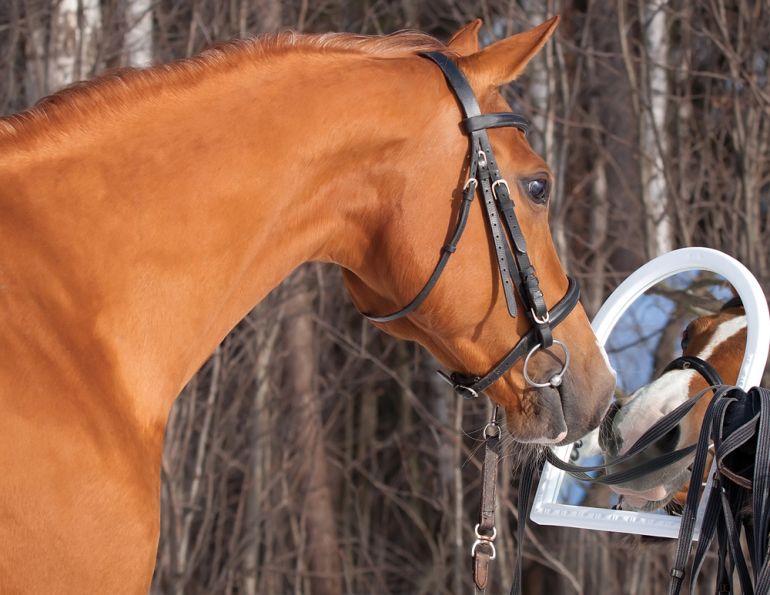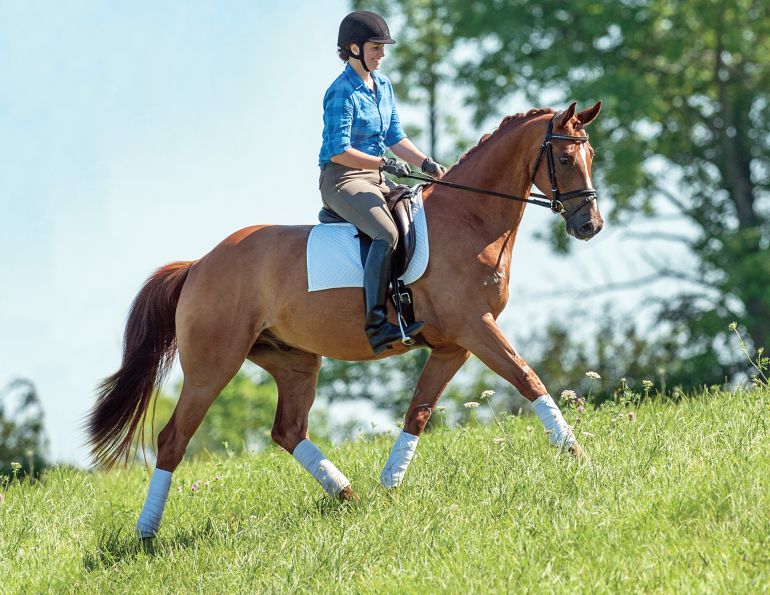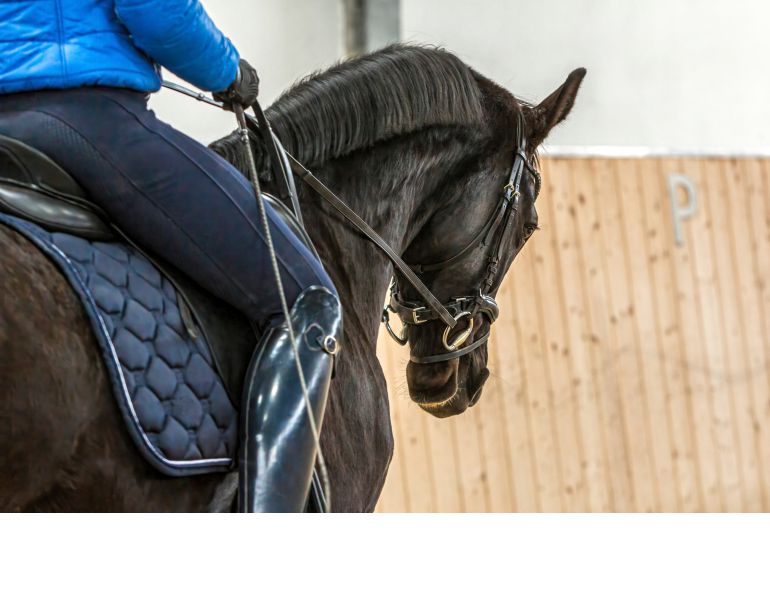By Will Clinging
In my last article, I discussed making the transition from walk to trot for the first time under saddle. Now that the horse is prepared to trot when cued, I will start to spend more time developing a quality trot. By “quality,” I refer to movement that is forward and has rhythm, with the horse maintaining a calm attitude while continuing to listen and trying to be correct. A rider who is used to riding a well schooled horse will not find this quality comparable, as there are still many things that affect the quality of a green horse’s movement.
Many green horses are relatively young and therefore physically immature. This immaturity can result in uncoordinated movement that will improve with age.
Mental maturity will also affect quality. A young horse will not have an established work ethic, and his attention span will be limited. He can only concentrate for so long before the work gets to be too much for him to continue comfortably. The young horse’s education can be intense because of the amount of information he has to absorb. Too much work can cause conflict in the sense that as the young horse tires, he loses concentration and will forget to respond appropriately to a cue or a correction, or he may simply find that evading is easier than doing the work. In a nutshell, quality is not only about the length or suspension of the stride.
The fundamental pieces of training are mostly in place already, and now we just assemble those pieces in a different order to achieve different goals. Forward movement must come first; this is where I want to work on pace and rhythm. Pace is relative to the speed we are going and rhythm is relative to balance. If the pace changes erratically, there is no rhythm to the movement, and therefore imbalance.
I will keep the horse on the rail to help with straightness, and I want to be able to control and adjust his pace. Initially, I want him to trot out until he is comfortable before I make any adjustments. In the early days of developing the trot there will be much imbalance from both horse and rider, but I just want him to trot without trying to stop. It is important that I keep hardly any contact so I do not contain the horse’s forward motion, and I will post the trot to try and keep it going without much leg. When the horse has established a pace that is comfortable for him to maintain, I can take up a little more contact and ask him to keep going forward.
I will likely lose some of the pace when I take contact with the bit, but I will try to just send him on without changing the amount of contact. At this point, the previous work in hand to teach him how to accept contact should start to pay off. He has already learned to move forward with contact; however, because I am now riding him instead of working from the ground, it might take some time for him to accept both leg and hand at the same time.
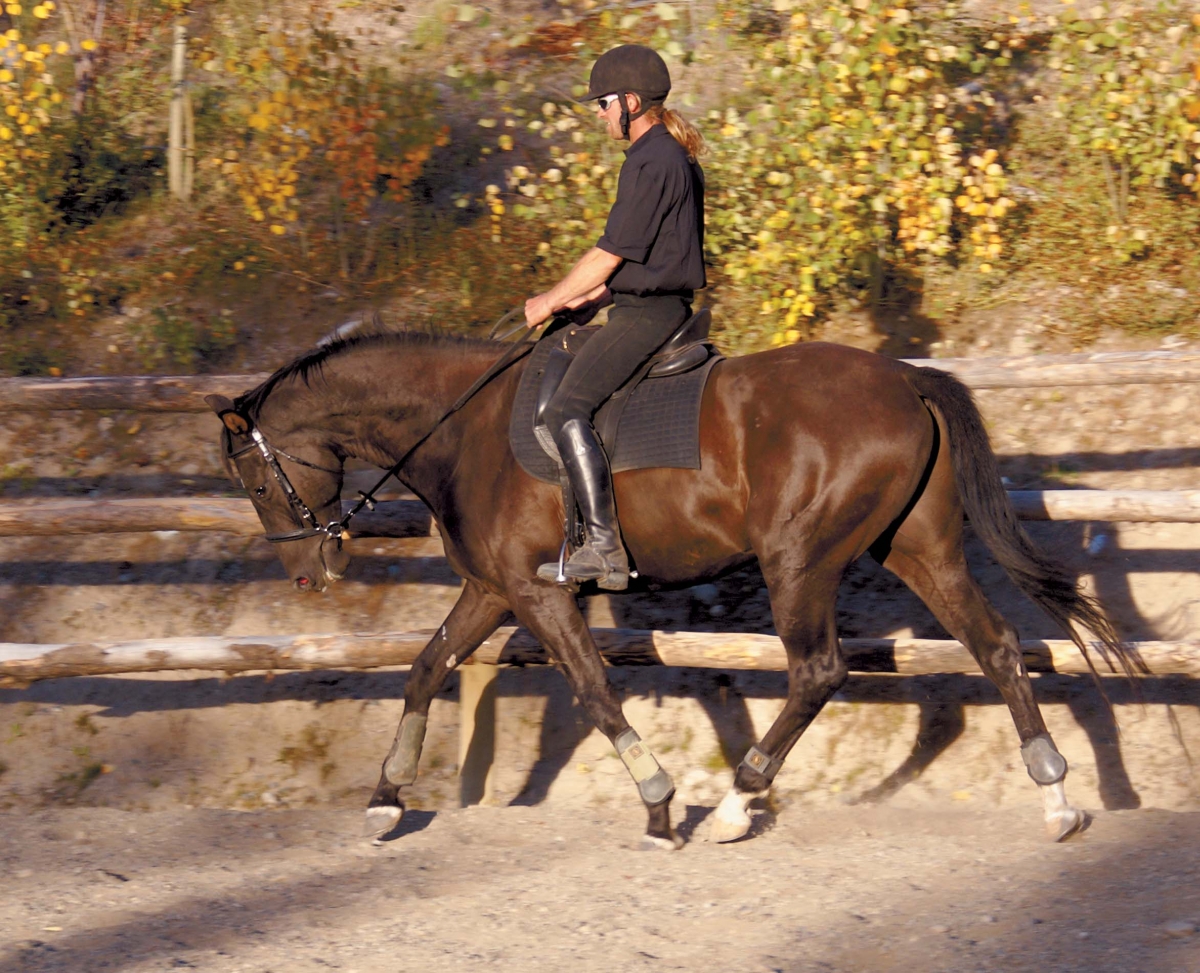
To lengthen his stride I ask him to reach down and lower his head and neck and go “long and low.” Photo: Shauna Clinging
When I work on the ground or in the saddle, I try to cue the horse as correctly as I can for the particular movement I want. I want to prepare the horse to be as correct as he can be. I will then correct any aspect of what I have asked for that didn’t work as well as I would have liked. When I correct one thing I expect something else to stop working as a result, so I just keep working on the worst part until he can put it all together. It may take some time, so I remember not to get too picky. He is obviously not so comfortable with what I am asking, or he would get it right every time I ask. I must have a realistic understanding of what he can and cannot do for me on that particular day.
The specific pieces of pace and rhythm are forward movement and contact. When he has accepted the contact from the bit and is still moving forward with a decent pace, I will start to work on adjusting his pace within the trot. I want to encourage him to lengthen his stride and speed up, or shorten his stride and slow down.
To lengthen his stride, I will ask him to reach down and lower his head and neck and go “long and low.” I will use my seat to push him, using my leg sparingly to support the aid from my seat. I do not want him racing; if he keeps building speed he will be more off balance and he could scare himself, or could start to canter. I want a comfortable forward trot to help improve balance.
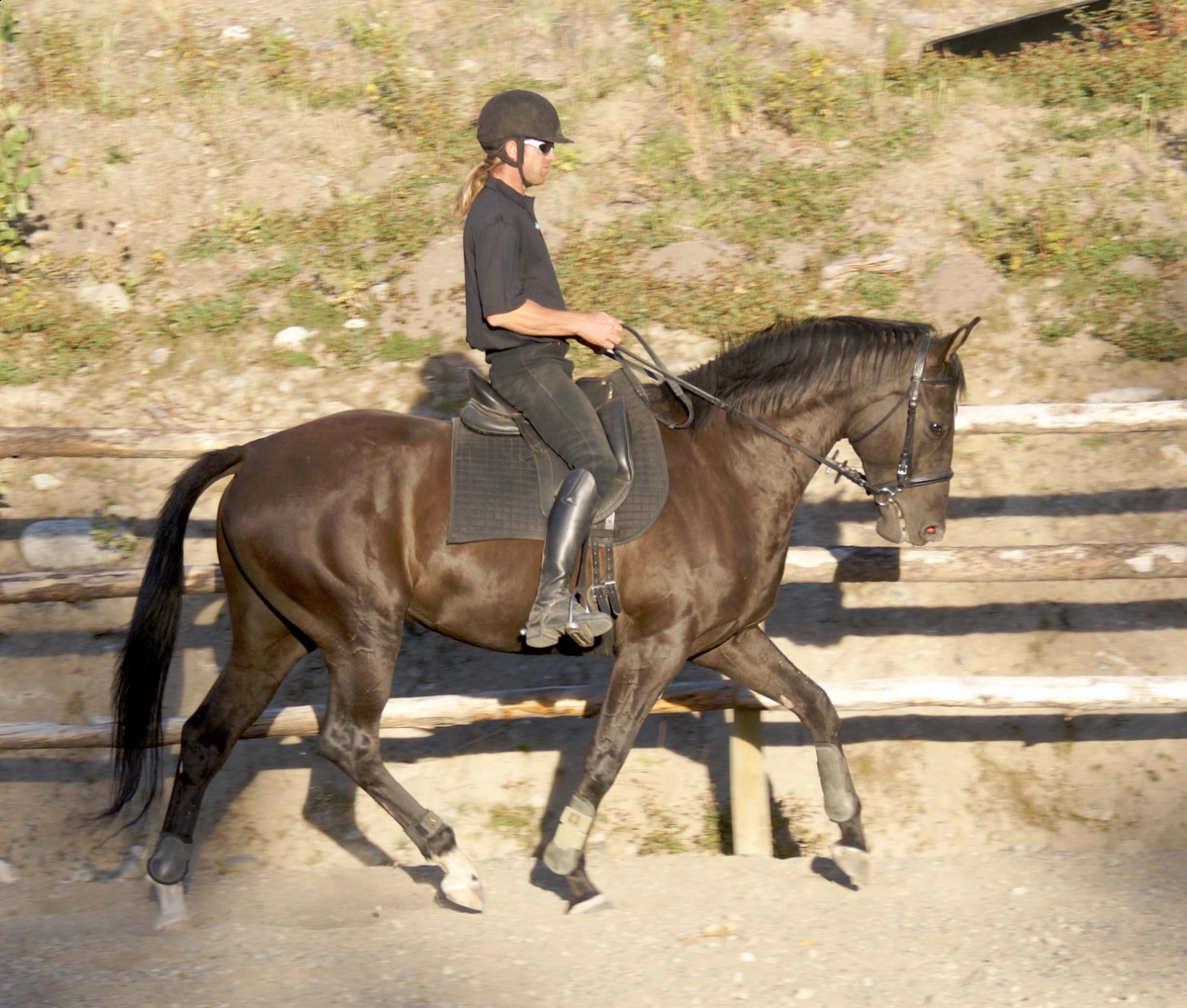
To shorten his stride I have my elbows touching my sides and then I arch my back and lift my shoulders. Photo: Shauna Clinging
To shorten his stride, I will keep my elbows touching my sides, arch my back, and lift my shoulders. This will cause my hands to lift slightly and should elevate his neck. It will likely not get much of a response initially, but I won’t start pulling on him. I can increase the pressure on the bit a little, but I will first try to wait until he responds. I might only get a tiny decrease in his pace, but it is enough that he responds at all. I will then release and ride forward. If he breaks into a walk, I’ll just pick up the trot again.
Rein length is also an important factor. If I have too much contact (the reins are too short), I will be containing the movement or pulling to slow him down. If I have too little contact (the reins are too long), I cannot ask him effectively to accept contact and raise and lower his head and neck. The contact is used only to communicate with him through the bit — it is not to pull and balance on.
Although the horse has a basic understanding of what I am asking him to do, he will often find it difficult. He now has to be able to put all the things he has learned to use, and thinking on the job is much more difficult than simply learning the theory behind the task. I’ll allow time for him to think and will work on one thing only for a few minutes before going back to something he understands better. I want to get in, make my point, and get out. Each time I come back to the task, he should be more capable of understanding. If I keep asking him to repeat the maneuver over and over again, he will quickly get bored.
Adjusting pace is a valuable tool that will develop softer transitions and improve balance. It also leads to developing and maintaining the horse’s and rider’s awareness of each other. The rider must pay attention to small changes in pace, and the horse must pay attention to subtle aids to get release. When teaching this concept it is important to remember not to do too much to make the change happen. Just let it happen.



